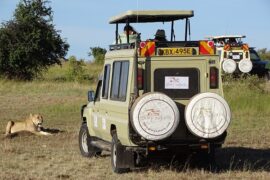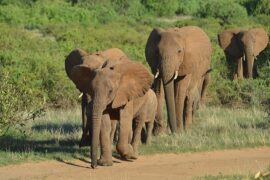Serengeti National Park
The Serengeti (14,673 sq.km) is one of the last great wildlife areas in Africa and the most famous. Huge open spaces, seemingly endless plains that blend with the horizon, fascinating rocky outcrops known as kopjes.
Famous for its wildebeeste migration where up to 1.5million animals take part in following the rain patterns throughout the year in search for young blades of grass.
Rotating in a circuitous route the migration moves from southern Serengeti northwards to Kenya’s Masai Mara. The soaring eagles that rise on thermals as prey and predators take their place in one of the greatest and last wildlife spectacles on earth. Best time to visit: Wildlife is plentiful all year.
The migration can be viewed in the southern Serengeti from January to May and from June to October in the north. Access can be limited during long rains in April/May. There is also an extensive selection of birdlife.
Serengeti National Park is one of the best places in Africa to see lion and cheetah close up. The vast, open grasslands of the Serengeti are without doubt one of Africa’s finest wildlife areas. Being there at the height of the migration is a never to be forgotten experience.
When to Visit
The Serengeti’s climate is warm and dry. The tropical rainy season is from March to May, with short rains from October to November. The Serengeti is lush and green after the rains, but a steady drying up follows which inhibits plant growth and encourages the animals to migrate in search of waters.
With altitudes ranging from 920 to 1,830 metres average temperatures vary from 15 degrees to 26 degrees Celsius. The coldest temperatures are experienced from June to October.
Serengeti Highlights
:: The Wildebeest Migration
:: Local Maasai Communities
:: Excellent Predators
:: Private & Exclusive Concessions
:: Hot Air Balloon Safaris
:: Safari & Beach Combination Holidays
:: Combines Easily with Ngorongoro Crater




